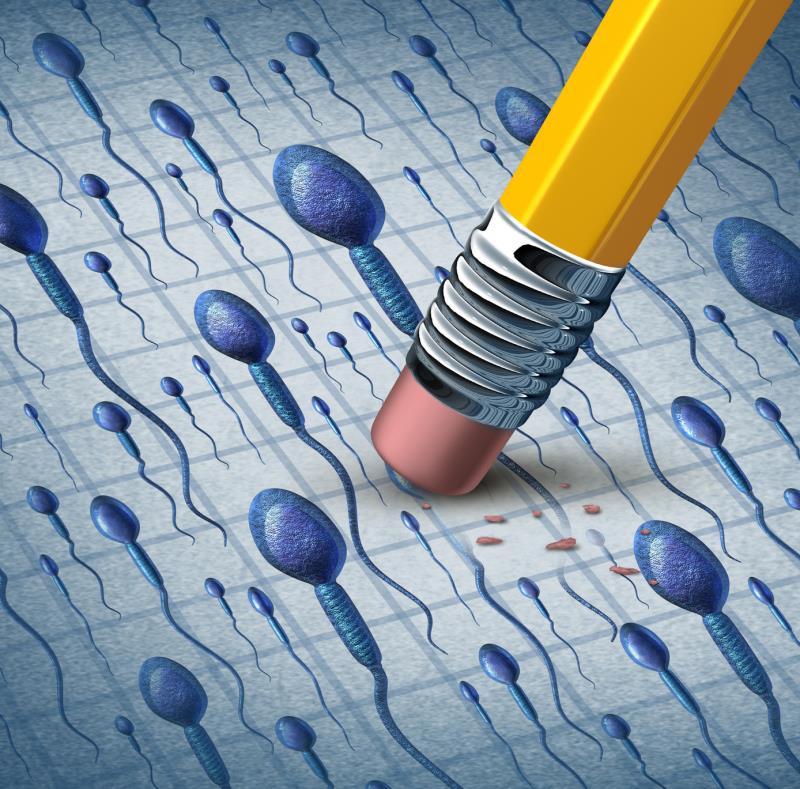
Use of antioxidants for treating male factor infertility appears to be of little benefit, improving neither semen parameters nor DNA integrity, according to the results of the Males, Antioxidants and Infertility (MOXI) trial.
“Oxidative stress can cause lipid peroxidation, thereby producing structural modifications to the sperm plasma membrane, which have been shown to interfere with sperm motility, acrosome reactions, and sperm–oocyte fusion. [It] may also damage the nuclear and mitochondrial genome by causing single and double DNA breaks, chemical modifications of bases, DNA crosslinks, and DNA protein crosslinks,” according to the authors. [Hum Reprod 2011;26:1628-1640]
While antioxidants have been shown to neutralize oxidative stress in semen, potentially improving sperm motility and reducing DNA fragmentation, results of the MOXI trial show that “antioxidant treatment of the male partner does not improve in vivo pregnancy or live-birth rates,” they added. [Int J Androl 2006;29:569-575; Cochrane Database Syst Rev 2019;3:CD007411]
The analysis included 171 men (mean age, 34 years) with sperm concentration ≤15 million/mL, motility ≤40 percent, normal morphology ≤4 percent, or DNA fragmentation >25 percent. All men had documented tubal patency and had female partners who were ovulatory.
Eighty-five men received an antioxidant formulation daily, whereas 86 were given placebo. Treatment lasted 3–6 months, with couples attempting to conceive naturally during the first 3 months and with clomiphene citrate with intrauterine insemination of the female partner in months 4 through 6.
Following 3 months of treatment, sperm concentration decreased with antioxidants but increased with placebo (median, −4.0 vs 2.4 million/mL). There were no significant between-group differences seen in terms of changes in sperm morphology, motility or DNA fragmentation. [Fertil Steril 2020;113:552-560.e3]
In subgroups with specific sperm abnormalities, 3-month treatment with antioxidants vs placebo did not produce significant improvements in sperm concentration among the 66 oligospermic men at baseline (median, 8.5 vs 15.0 million/mL), in motility among the 75 asthenospermic men (34 percent vs 36.4 percent), and in DNA fragmentation among the 44 men with high DNA fragmentation (29.5 percent vs 28.0 percent).
Furthermore, antioxidant treatment had no effect on pregnancy outcome. The rate of cumulative live birth at 6 months was 15 percent with antioxidants vs 24 percent with placebo (p=0.14). Pregnancy rates were similar both in phase 1 when couples received no additional treatment (9 percent vs 9 percent; p=0.98) and in phase 2 when women received ovarian stimulation with clomiphene citrate and timed intrauterine insemination (12 percent vs 21 percent; p=0.11).
The antioxidant formulation used in the study contained 500 mg of vitamin C, 400 mg of vitamin E, 0.20 mg of selenium, 1,000 mg of l-carnitine, 20 mg of zinc, 1,000 μg of folic acid and 10 mg of lycopene.
“Unfortunately, the design of the MOXI trial does not allow the differentiation of effects of individual nutrients and inherently assumes there are no interacting effects between the different antioxidants in the formulation. Because this assumption may not be true, future randomized controlled trials could study individual components through a factorial design,” the authors said.
In a linked editorial, Dr Martin Kathrins from the Brigham and Women's Hospital in Boston, Massachusetts, US, enumerated several theoretical possibilities that would explain the absence of benefit from antioxidants in MOXI. For instance, more men with secondary infertility were included in the placebo group, and men with severe oligozoospermia were excluded. [Fertil Steril 2020;113:542]
“The usual limitations of prospective trials aside, th[e] study is a very compelling argument to save our patients the cost and burden of empiric therapy with over-the-counter antioxidant nutraceuticals,” Kathrins wrote.